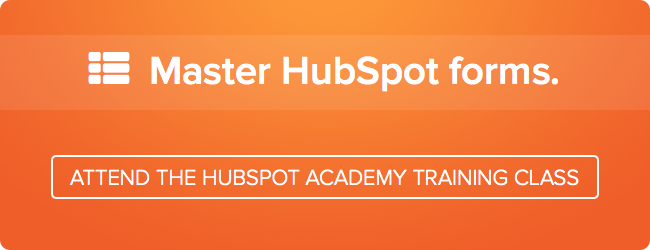Your page is perfected, your form finalized, you are ready to rock and roll—but what will you do with the contacts who fill out your form?

There are three common directions that often present themselves. Once your contacts fill out a form, you can present them with an inline thank you message, send them an automated email reply, or enroll them in a workflow.
As to what you should do, it really depends on your goal: is this more of a one-off interaction, or an action that could immediately lead to something more? There are merits to each option, but rather than simply leave it at that, I’ll go in-depth and get some help from the 1993 hit (and arguably the best movie ever made), Jurassic Park, to use as a reference with specific examples and tips to better serve your marketing team.

Form Submission Scenarios
Scenario 1: John Hammond is collecting blog subscribers from his new website
John has been working hard on perfecting the new website for Jurassic Park, and he has spared no expense! He’s got a sweet logo, the site is fully responsive, and—like many a great marketer—he has a fantastic blog set up to educate and delight his contacts.
Hammond wants to capture contacts and grow his reader base, so he has a “Subscribe” form on his blog. Because let’s face it, who doesn’t want regular updates on Jurassic Park’s development as well as posts on the eating habits of an Apatosaurus? John’s design team placed a nifty form in his blog sidebar that readers have been stampeding to sign up on, and he has been collecting blog subscribers by the dozens since he launched the site. The form is simple enough: just name, email, and subscription frequency. This is a first touch for many new leads and casts a wide net for John’s marketing and sales teams.
What should they see after submitting the form?
To thank them, John can set up an inline thank you message to appear in the form’s place upon submitting. This adds a personal touch to the form without getting too invasive.
Signing up for the blog subscription form is a first interaction for many of these contacts. They’ve just encountered the Jurassic Park site by landing on his blog, possibly from a Google search or a referral from a friend, so while they are interested, they aren’t necessarily all candidates to be customers—not yet at least.
Scenario 2: John Hammond is collecting landing page submissions
John’s marketing team set up a stellar landing page to help promote and advertise the new park as it is being built. Visitors from around the world are accessing this from the web and social media and are converting through the page’s general inquiry form, as they want to learn more about the park and its development.
What should they see after submitting the form?
Filling out this form may be a first touch point for these contacts, or their first jump to going from subscriber to lead, so while they are interested, they may not all be ready to be enrolled in a lead-nurturing campaign.
From these forms John can create an automatic email reply that will be sent straight to the submitter’s inbox as a special thank you while possibly providing an invitation to learn more via a CTA.
Based off of how contacts interact with that email, John will have a great sample to then determine the level of interest and engagement from his contacts. Those interested contacts may then be enrolled in a workflow down the road (possibly for a coupon day, or special giveaway)—but just not right away.
Scenario 3: John Hammond is looking for experts to view his park
It’s crunch time for Jurassic Park; there have been a few mishaps in the park’s construction and John needs to find experts to scout it out and make sure it’s safe! Investors are getting anxious after reports of raptor escapes and mysterious work-related injuries. They're requiring a full inspection before its opening day, but how will John find such men and women to scout out his park for him?
John could cold-call his contacts—or he could use a deeper level of lead nurturing available in HubSpot such as a workflow. The Jurassic Park website has plenty to offer to visitors, such as PDF downloads, numerous other forms to gather more information on leads, and several landing pages on the park’s development, special programs, and offers. As a result, there are a few contacts who have been more active than others and could be great candidates to check out the park before its grand opening.
John’s marketing team has agreed a workflow is the way to go, as they hope to nurture their more active leads in a series of emails. So they set up a form asking questions on interest in the park’s development as well as occupation in order to capture leads who are qualified to inspect the park and to sign off on its safety.
What should they see after submitting the form?
Chances are that from this form, John could capture a few leads who know a thing or two about dinosaurs (or Chaos Theory) and enroll them in a workflow to engage them directly in a series of emails and reminders to get them to apply for an all-expenses paid weekend trip. He could even specifically enroll contacts based on occupation, or use lead scoring to capture those extra-active leads in his system. It certainly would be more efficient than flying a helicopter to the Montana desert to meet them directly!
With his new workflow in place, John is in a perfect position to bring his group of experts to the park to give the “OK” before opening it to the public. What could go wrong? (Nothing with his marketing operations, that’s for sure!)

So when you are placing a form on a landing page or a blog post, ask yourself: what is the ideal outcome from filling out this form?
If your submitters are coming to your site for the first time and not likely to become customers just yet, a simple “thank you” might be the best choice. However, if this form is pulling in a bit more advanced information, or is one that could be filled out by contacts further down the sales funnel, then chances are these leads are interested in taking that next step—in those cases, a workflow may be the way to go.
Always think back to what your ultimate goal with this specific form is, as well as what stage the target contacts are in, and you’ll know how best to leverage your form!

![3 Service-focused Workflows to Empower Your Support Team [Support Series]](https://53.fs1.hubspotusercontent-na1.net/hubfs/53/service%20button.jpeg)
![How to Add Your Branding to a Marketplace Template [Support Series]](https://53.fs1.hubspotusercontent-na1.net/hubfs/53/Support/Support%20Series%20User%20Blog%20folder%20copy%202.png)
![Creating a Custom Date-Based Property Report [Support Series]](https://53.fs1.hubspotusercontent-na1.net/hubfs/53/Support/HubSpot%20Support%20Series%20Horizontal-603978-edited.png)
![Advanced Troubleshooting: The Network Tab [Support Series]](https://53.fs1.hubspotusercontent-na1.net/hubfs/53/HubSpot%20User%20Blog/HubSpot%20Support%20Series%20Horizontal.png)
![How to Update an Incorrect PDF Title [Support Series]](https://53.fs1.hubspotusercontent-na1.net/hubfs/53/HubSpot%20User%20Blog/Photo%20editors%20using%20laptop%20in%20meeting%20room%20at%20office-1.jpeg)
